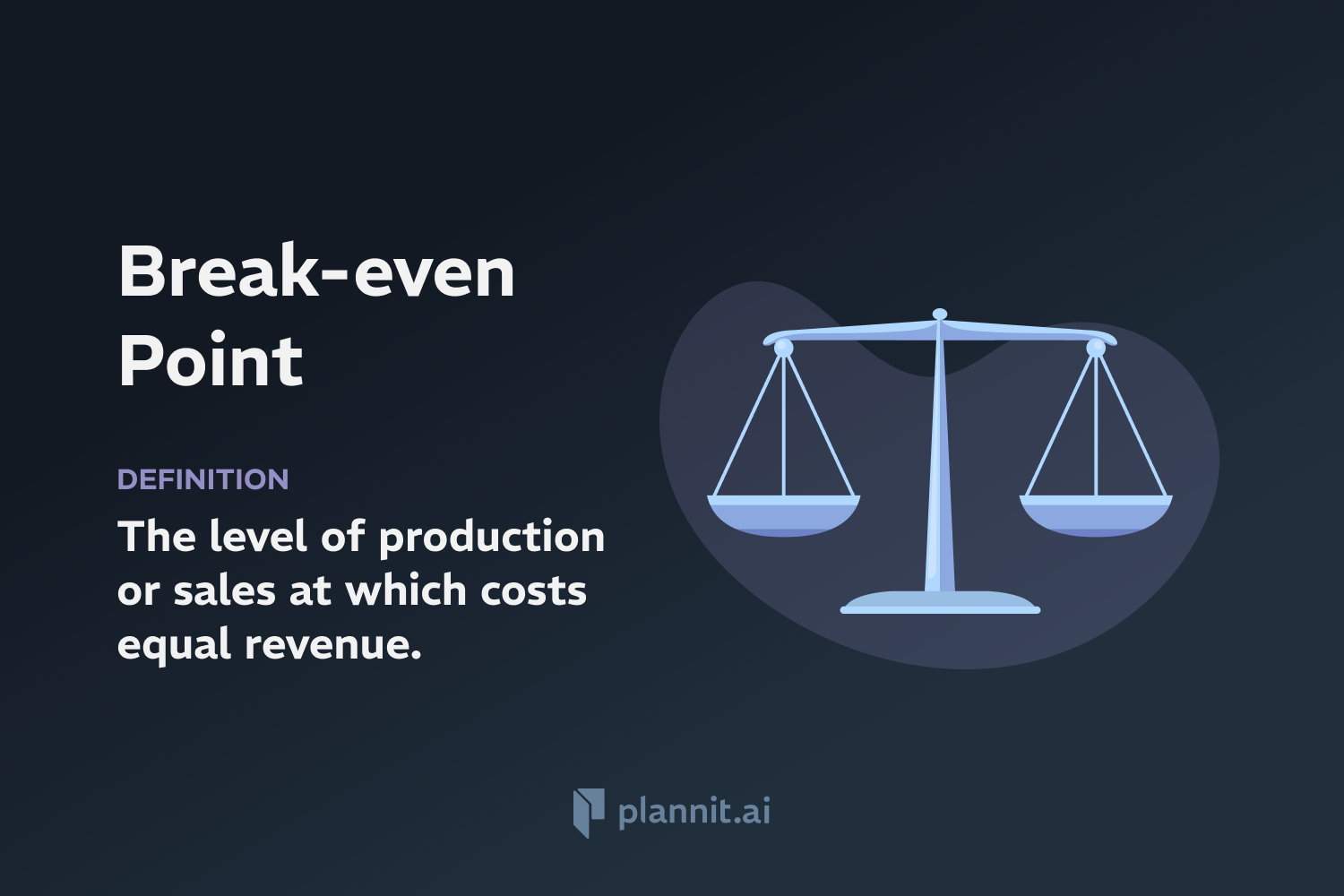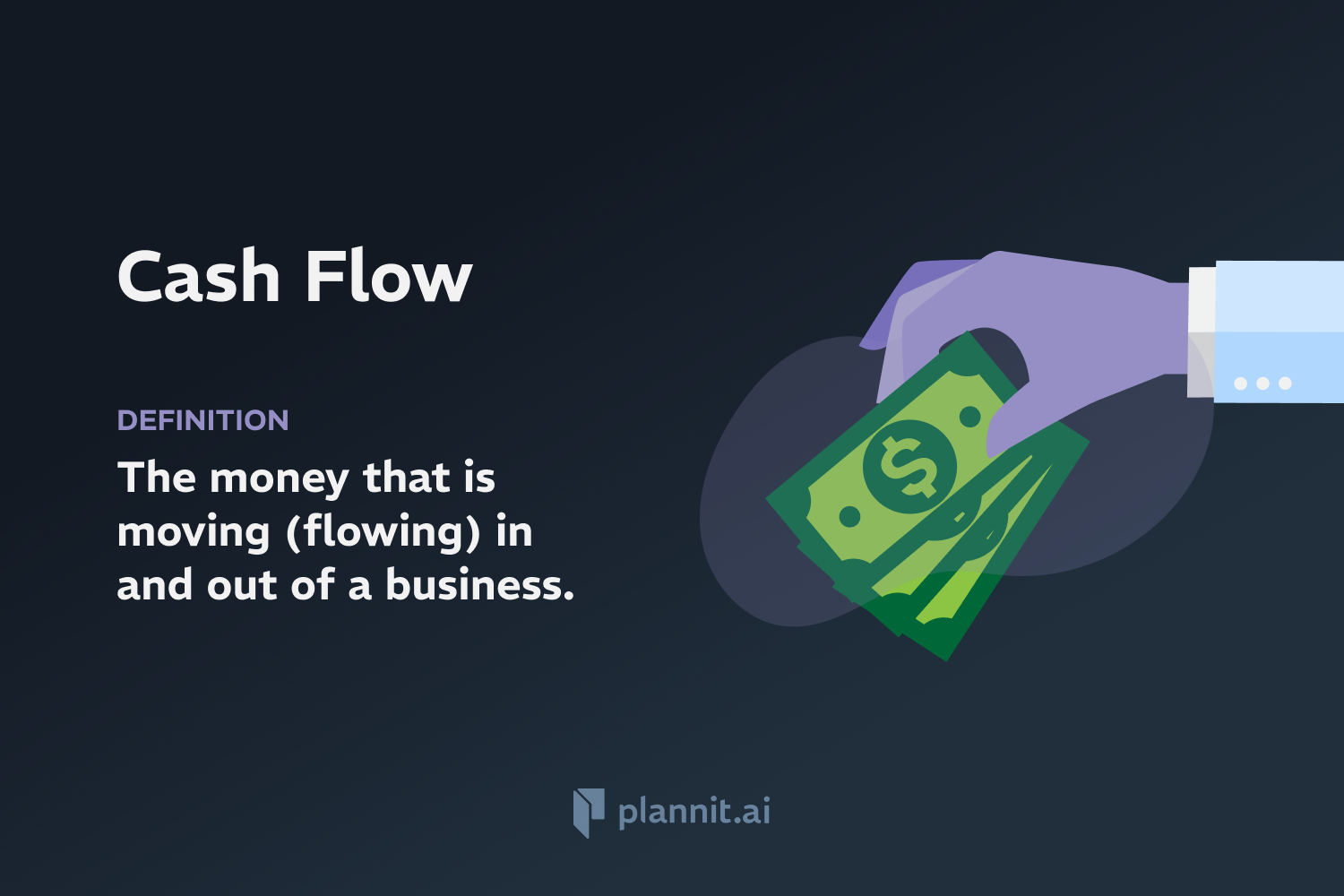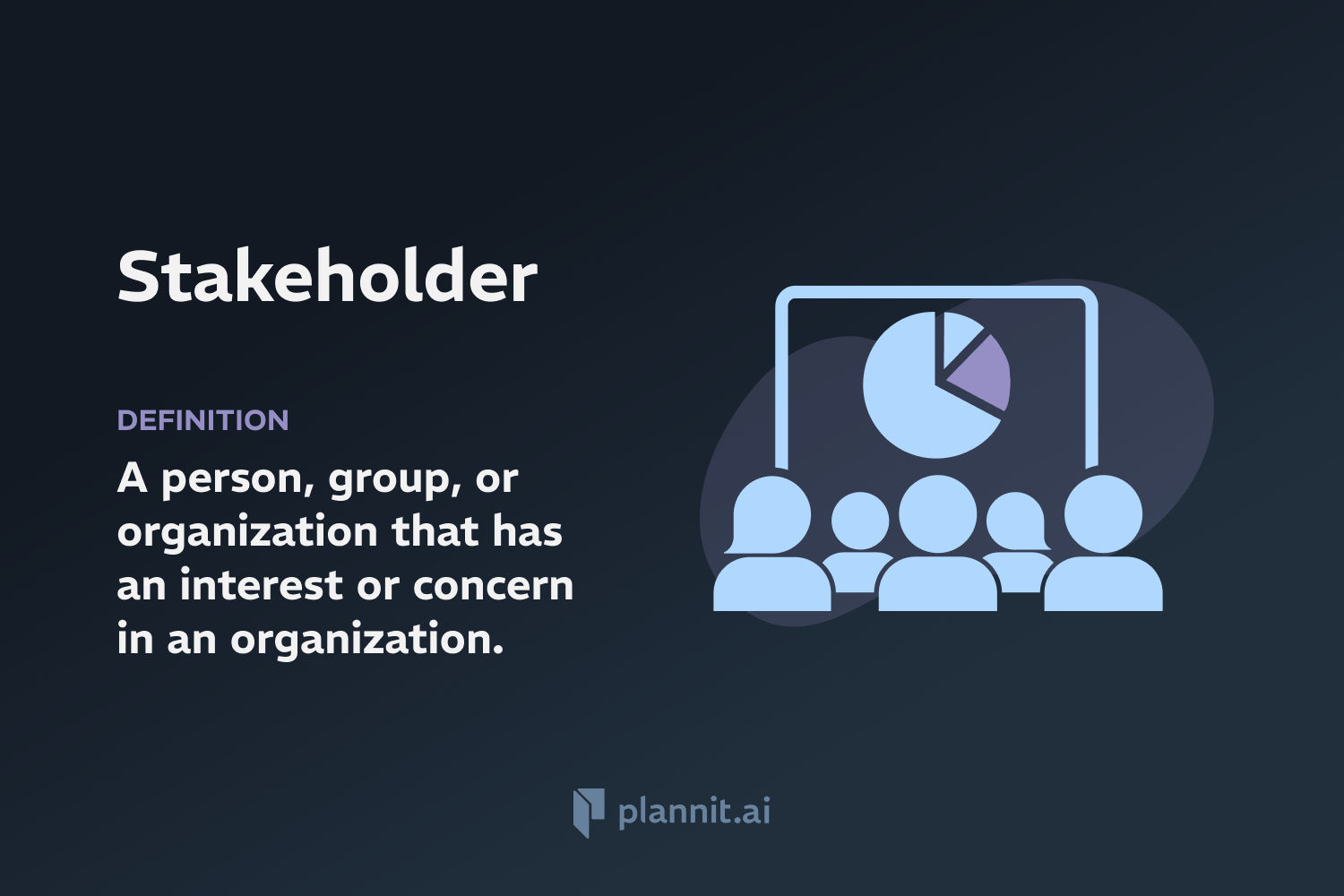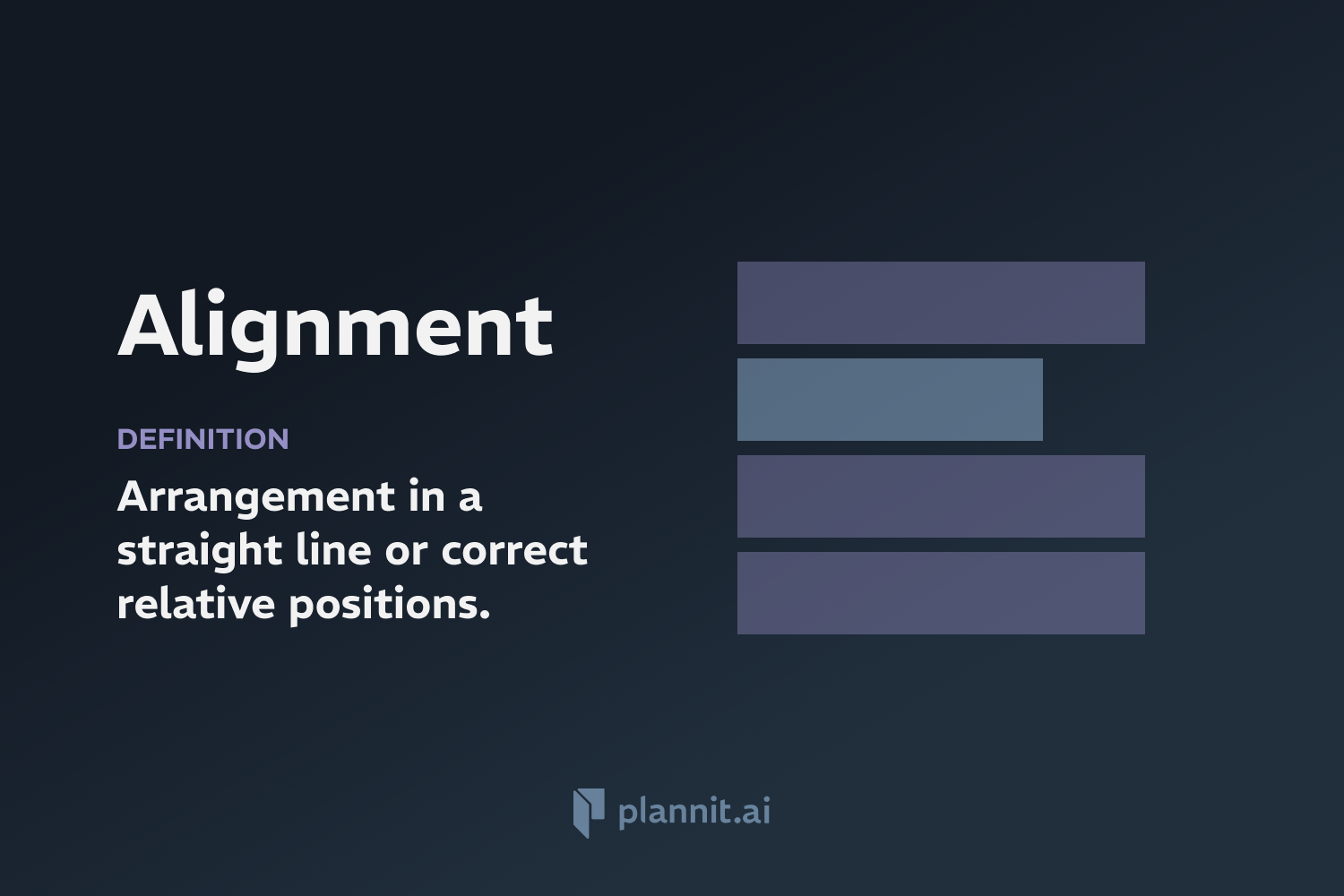Need Help With Your Business Plan?
Answer tailored questions and get a detailed business plan in minutes.
Break-even Point: Definition & In-Depth Explanation

The break-even point (BEP) is a critical financial metric that calculates when a business, project, or investment will become profitable, meaning when its total revenues will equal its total expenses. It is widely used across various industries and types of businesses to evaluate the financial feasibility of business ventures, set sales targets, and make pricing decisions. Understanding the break-even point is essential for financial planning and management, as it helps businesses determine how much product they need to sell to cover their costs or what level of service they must provide to avoid losses.
Purpose:
The purpose of calculating the break-even point is to identify the moment at which a business or project can expect to start generating profit, allowing for more informed decision-making regarding pricing, budgeting, and strategic planning. It aids in assessing the potential profitability of investments and in setting benchmarks for financial performance. Knowing the break-even point helps businesses manage risks by understanding the sales volume required to avoid losses.
Example:
A company manufactures and sells bicycles. Each bicycle costs $200 to produce (variable costs), and the company has fixed costs (rent, utilities, salaries) of $10,000 per month. If the selling price of each bicycle is set at $300, the break-even point can be calculated by dividing the total fixed costs by the contribution margin per unit (selling price - variable costs), which is $100 in this case. Therefore, the break-even point is 100 bicycles ($10,000 / $100 per bicycle), meaning the company needs to sell 100 bicycles per month to cover all its costs.
Related Terms:
Fixed Costs: Costs that do not change with the level of output, such as rent, salaries, and insurance.
Variable Costs: Costs that vary directly with the level of production, such as materials and labor.
Contribution Margin: The difference between the selling price of a product and its variable costs.
Profit Margin: The amount by which revenue from sales exceeds costs in a business.
FAQs:
Why is the break-even point important for a new business?
It helps a new business understand the minimum sales volume needed to cover costs, which is crucial for survival in the early stages and for future profitability.
Can the break-even point change over time?
Yes, the break-even point can change due to variations in fixed costs, variable costs, or selling prices, reflecting the dynamic nature of business operations.
How can a business lower its break-even point?
A business can lower its break-even point by reducing fixed costs, decreasing variable costs per unit, increasing the selling price of its products, or a combination of these strategies.
Is reaching the break-even point the ultimate goal of a business?
While reaching the break-even point is an important milestone for financial stability, the ultimate goal of a business is to generate profit and ensure long-term viability.
How does the break-even point differ for service-based businesses?
For service-based businesses, the break-even point calculation considers the cost of providing the service (variable costs) and the overheads (fixed costs) against the service charge. The principle remains the same, but the nature of costs might differ from those of product-based businesses.
Want to figure out what your break-even point (BEP) is, try our free BEP calculator.
Get funding with a business plan that will impress investors.
Starting a New Business?



